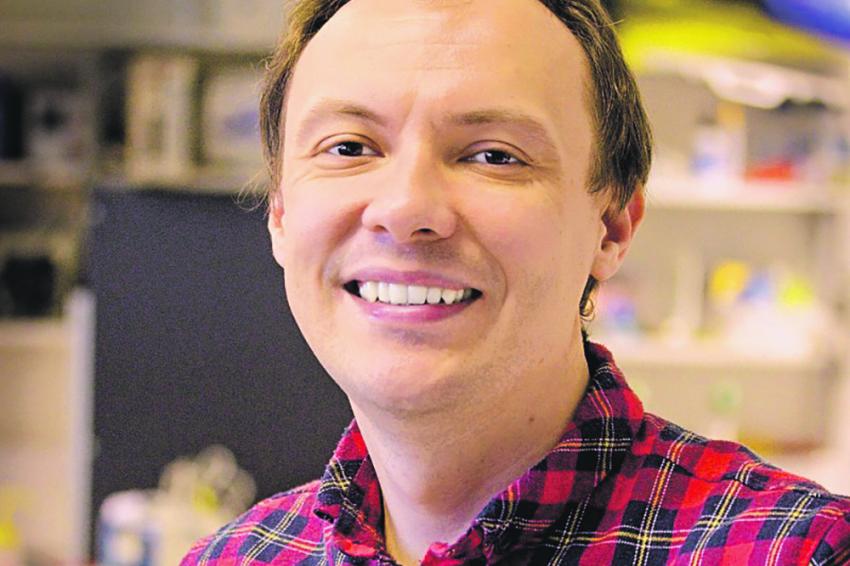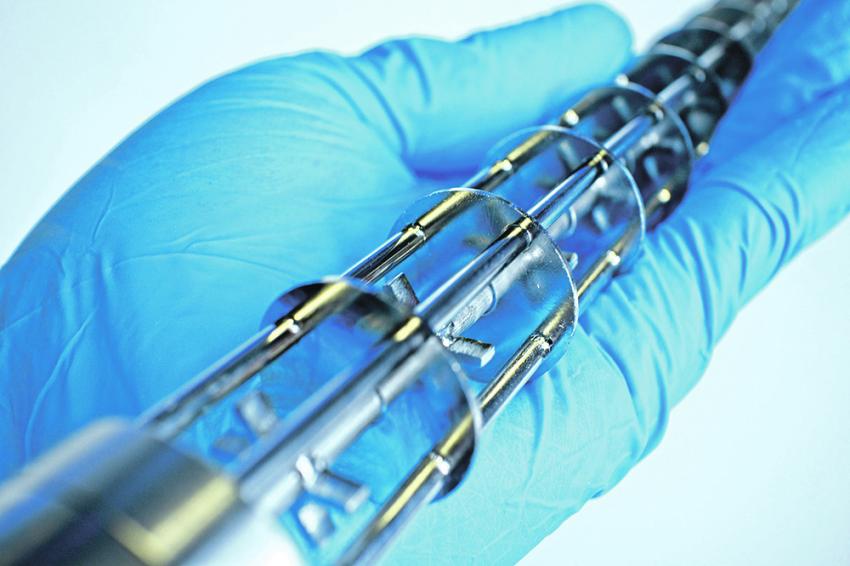Halving Chemical Manufacturing Costs
An Innovative Continuous Reactor for Efficient and Sustainable Chemical Production
CHEManager: Mr. Cherkasov, what was your motivation for founding Stoli Chem?
Nikolay Cherkasov: I have spent many years in academia in chemistry and engineering having published 50+ research papers. With this experience, I was looking to share it for the benefit of manufacturing companies. Ideas must work. Today we have a multinational team centered on our site in Wellesbourne just south of Birmingham in the heart of the UK.
You and your team invented and developed the SABRe flow reactor. What problem does this technology solve?
N. Cherkasov: Traditionally batch processes are used for chemical production. Processes run in batch are limited by the discontinuous nature: processes are starting and then being taken to completion, then prepped ready for the next. The SABRe converts batch to flow. In flow chemistry, the process runs 24/7, meaning you generate more products and value.
Continuous chemistry opens up more opportunities for the processing of chemistries as well as the more dangerous chemistries such as explosives and highly exothermic reactions. Smaller volume intensified reactors prevent runaway with far more control.
What have been the most exciting projects so far?
N. Cherkasov: We have had both exciting and challenging projects. One recently was with corrosive sulfur chemistry, and another using viscous slurries certainly proved challenging but were successful in showing the versatility of the reactor. Perhaps the most exciting are our recent projects involving light and allowing photochemistry to be undertaken in our glass reactor. The future is certainly bright!
What are the benefits of converting batch processes to flow?
N. Cherkasov: The main benefits of converting to flow come from exceptional heat transfer meaning that the reaction temperature is better controlled. Along with this, the SABRe has the best-in-class mixing capabilities. This high mixing capability allows for high mass transfer and means that the reactants are homogenized thoroughly.
The SABRe utilizes a series of CSTR (continuous stirred tank reactors) which are in essence a series of batch reactors stacked on top of one another. The reactants move from one tank to another throughout the process. The unique design of the SABRe allows for additional reagents to be added at any stage of the process offering complete control.
One of the case study examples using the SABRe highlighted that in an enzymatic esterification there was a ten-fold throughput increase compared to batch. Everyone can see the value in those types of increases!
What makes your flow reactor unique?
N. Cherkasov: The mixing is independent of the fluid flow rates. This means that scale-up is simpler and broadens opportunities to undertake a wider range of chemical reactions.
The unique sparging tubes that run along the inside of the reactor allow the addition of reagents or in-line sampling.
The configuration of our reactor allows precise reaction control, alongside best-in-class mixing.
Our reactor is also easy to use and is offered in a variety of materials to ensure chemical compatibility. The reactor can also handle combinations of liquids, solids, and gases.
Which application sectors do you focus on mostly?
N. Cherkasov: Many of our customers are in fine chemicals, speciality chemicals, and pharmaceuticals. Although our technology can be applied to any fluid process.
What will be your next steps in technology and business development?
N. Cherkasov: Our main priority now is scaling up our reactor, to help as many businesses as possible switch to flow chemistry.
 Business Idea
Business Idea
Revolutionizing Chemical Industries
Stoli Chem’s vision is to save the chemical industry millions in costs by increasing chemical processes’ efficiency, safety, and sustainability. The fine chemicals industries are using processes which have not changed in centuries. Most of these chemical processes are carried out in batch reactors for simplicity. An alternative to batch processing is processing in flow (or continuous chemistry). The SABRe allows for scalable (flow) chemistry from lab to production scale.
Batch manufacturing has inherent flaws. By definition, batch is a start-stop process. After each batch cycle there is a cleaning and prepping period before a new batch can start. This is unproductive downtime. In GMP pharma, a fully utilized batch reactor produces chemicals 10% of the time at most.
Flow, by definition, is continuous. The SABRe utilizes a series of continuous stirred tank reactors (CSTRs), ten in total. These CSTRs can be viewed as small batch reactors with the reactants moving from one tank to another. This similarity to batch means that conversion from batch to flow processing is easier. In each tank an impeller rotates up to 1,300 rpm ensuring that the reactants are homogenized.
Uniquely, reagents can be added to any process stage to allow for optimum conversions to the valuable products. Temperature is controlled via a jacket surrounding the reactor, and stirring is controlled by a stirrer head connected magnetically to the reactor stirring shaft.
Flow reactors have a smaller footprint than batch reactors and can often produce as much. Hence, the same manufacturing size allows for superior and more efficient production.
 Elevator Pitch
Elevator Pitch
Sustainable Chemical Production
Sustainability does not require a premium price. At least in chemical production, sustainability could be economical. The keys are efficiency and scalability. Current batch production practices are scalable but neither efficient nor sustainable. On the other hand, continuous manufacturing is hugely more cost-, energy-, and material-efficient; yet is not scalable without multi-million investments. Stoli Chem provides tools for scalable and sustainable continuous chemical production.
Based on the experience of the academic founders, they have developed a technology that breaks and overcomes the standard dilemmas in flow. In most flow processes, the mixing speed, pressure drop, residence time, and fluid feed rates are inter-dependent. If the process is altered or scaled up, everything changes requiring extensive (and expensive) R&D work to regain and ensure process control.
In the SABRe system, mixing is decoupled from the flow rates. This design opens tremendous flexibility — the processes could be changed or scaled up while maintaining exceptional process control. The system opens the possibility of accelerating and intensifying multiphase (including solids!) processes that are a scourge of standard flow systems.
The future for Stoli Chem is promising. The flagship SABRe is proving popular for R&D chemists and engineers alike. Stoli Chem is currently working on scaling up and opening photochemical applications.
Milestones
2016
Foundation of Stoli Chem as a Warwick University spin-out
2018
Competitive Horizon 2020, SME Instruments project started to scale up the technology from 1 to 100 kg/day chemical synthesis
2021
Lab-scale SABRe reactors available
2022
A project started aiming to scale up and demonstrate 1,000 t/y chemical manufacture
Road Map
2022
Launch of a kilo-scale photochemical reactor
2024
Launch of a 10 L SABRe system for kiloton production
Downloads
Contact
Stoli Chem
Prince Phillip Building, Wellesbourne Campus
CV35 9EF Wellesbourne
United Kingdom
+44 794 264 6822











